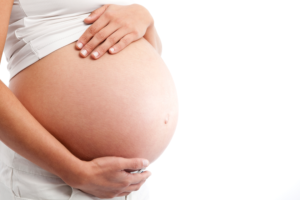section-02280fe
Pubic Bone Pain and other Difficulties My Wife Faced During and After Her Pregnancy, and How Chiropractic Helps

The Benefits Of Chiropractic For Pregnancy
We received the wonderful news that my wife was pregnant back in June 2019. Naturally, we were absolutely ecstatic by this, and so began our journey through the ups and downs of being pregnant. I will try my best to share our journey with you, so that you (especially the men!) can learn about how Chiropractic helped my wife tremendously through this sometimes arduous journey. How it helps with her pubic bone pain during pregnancy and other issues or difficulties associated with pregnancy. I hope that in reading this, you can be more prepared, reassured that help is available, and be armed with the comforting knowledge that you are not alone, nor are you any different in your experience during, and after pregnancy.
section-3845968
First Trimester
Morning Sickness:
After we recovered from the initial high of learning the good news, my wife started getting progressively bad “morning” sickness, which curiously only happened in the evenings. Thankfully, Chiropractic for pregnancy has been shown to have up to a 92.9% improvement rate for nausea, and up to a 95.9% improvement rate for vomiting. It is accomplished by adjusting the spine which optimizes the transmission of nerve signals to the organs, making them run more smoothly and optimally. Morning sickness could last right up to the second trimester of pregnancy, so I insisted that my wife see me weekly, to manage her nausea.
Back Pain During Pregnancy:
Pregnancy is one of the main causes of back pain in women. This is because your growing uterus shifts the center of gravity, putting more stress and strain on your back. 50% – 80% of women will experience back pain at some stage of their pregnancy. The following video illustrates how pregnancy can affect the nerves in your spine, and cause not only back pain during pregnancy, but pelvic and buttock pain as well. Scientific literature also shows that chiropractic for pregnancy is effective in the treatment of lower back pain.
Difficulty Breathing:
As the uterus grows, it pushes everything away in all directions, including your organs, intestines, bladder, and even your diaphragm. This can cause shortness of breath, as you adjust to the restriction imposed on your diaphragm. My wife and I found that manual release of the muscles related to breathing, as well as breathing exercises found here, all helped to improve her shortness of breath.
section-8702f34
Second Trimester
Ladies take note! Once your gynecologist clears you for travel, the second trimester is the best time for you to have your “baby moon.” Be extra cautious when you travel, because back pain usually worsens as the uterus grows and pushes on your spine. Having said that, my wife and I did travel quite a fair bit during this period. We also began experiencing the onset of Heartburn.
Heartburn:
Also commonly called acid reflux, this problem is potentially caused by two things:
- The hormone progesterone being released in your body in larger amounts due to pregnancy, relaxes the valve in your stomach. This allows some stomach acid to travel up the esophagus, and it happens more frequently in the 2nd and 3rd trimesters of pregnancy.
- The growing uterus will also place increasing pressure on your intestines and stomach, leading to indigestion and heartburn. We managed this by having my wife consume small meals, multiple times throughout the day, and also by staying extremely well hydrated. Water is especially important during this period, as it can help prevent dehydration which can lead to low amniotic fluid, and cause birth defects and even miscarriage. Read this for some recommendations on how to stay well-hydrated during your pregnancy.
Decreasing strength:
As my lovely wife progressed through her pregnancy, we noticed some dramatic changes:
- Significant noticeable strength decrease everywhere, especially in her abdominal and core area
- She could no longer lie flat on her back. Exercise movements that required lying down on the bench now had to be done on a slight incline.
- With her growing belly, some exercises were impossible to perform, and either had to be modified, or eliminated altogether. The benefits of exercise during pregnancy are extensive and well documented for it can:
- Reduce bloating and water retention
- Improve constipation
- Reduce backache
- Prevent and treat gestational diabetes
- Help you keep fit and cope with the added weight of pregnancy
- Build stamina needed for labor and delivery
Here is a compilation of some videos we shot at various stages throughout her pregnancy. See if you can guess what week she’s at, in all the different videos!
section-1bd1ad9
Third Trimester
As the uterus grows, many of the previously mentioned issues like heartburn, backache, muscular de-conditioning, and core muscle weakening, all potentially worsen. The third trimester also introduced a couple of new issues we had to deal with.

Pubic Bone Pain (Pubic Symphysis Pain):
This is a very painful area located in your groin area, right around your pubic bone, which is where the 2 sides of your pelvic bones join in the front. Other very common areas of pain are in the sacroiliac joint (where the sacrum meets the ilium,) the lower lumbars, and the sacrum. Apart from having tremendous pain especially when you press on it, these pregnant moms affected by this condition also tend to “waddle” when they walk. Consequently, many husbands (myself included) were pleasantly surprised when their wife’s pain went away, and their waddling disappeared. This was right after we performed a chiropractic adjustment and soft tissue release. The probable cause of pubic bone pain, is the release of Relaxin in the body, which although is essential during pregnancy, can cause pelvic, sacral, lower back, and pubic bone pain at this stage.
Water Retention:
Water retention usually occurs in the feet and legs, and you will be able to tell because you might begin to see pink patches growing around your thighs and calves, or your shoes might feel a lot tighter. You can also tell by looking at the folds of skin around the toe area. Typically, they tend to disappear or look less obvious, right around the joints of your toes. We employ a very gentle lymphatic drainage technique to reduce the water retention. Consequently, as their bodies release the extra fluid, our moms feedback that they have increased urination, soon after treatment. In addition, I advise moms to cut down on salt, increase water intake, and go out for slow to moderately-paced walks daily. We also recommend moms to wear our custom-made orthotic insoles, and appropriate shoes, which all help with foot pain. More info about dealing with water retention during pregnancy can be found here.
Morning Sickness:
The dreaded morning sickness could rear its ugly head again sometime during the third trimester. The reason why, is nicely illustrated by the following video, which demonstrates how everything is literally squished aside, as the uterus grows.
Severe backache, painful feet, difficulty breathing, and fatigue all can make a vengeful return during this trimester. I was treating my wife in the clinic weekly to alleviate her symptoms, and I was pressing on her back almost nightly to release the spasms.
Breech Babies:
By around week 34, 90% of babies should typically be in the correct head-down position. My wife and I discovered that at week 36, our baby was still not in the right position. He was in the head-up position, also known as the “breech” position. This was the period my wife came in for very focused weekly chiropractic adjustments again, because Chiropractic has been shown to help this problem. It is important to note that chiropractors do not turn breech babies. Rather, they create a more functional and optimal environment within the mother’s body, which facilitates the baby to turn. Moreover, we had to keep up with the Chiropractic adjustments, because ultrasound scans showed that after our baby turned head-down, he turned again and ended up in a transverse lie. This means he was lying sideways in the uterus, which could have lead to a problem called cord prolapse. Happily, with continued chiropractic adjustments and soft tissue release, our baby boy turned yet again, back to the head-down position and right in time for delivery!
section-7193c03
Post Partum
Some of the more troublesome problems that you might have to deal with after giving birth, are:
Carpal Tunnel Syndrome:
This is characterized by sometimes debilitating numbness and tingling in the hands, caused by fluid retention, and potentially excessive bending of the wrist when carrying the baby. This is helped tremendously by the use of Shockwave Therapy, also known as Extracorporeal Shockwave Therapy (ESWT). It has numerous scientific studies that recommend its use, one of which can be found here. It has also been shown to be more effective than having a steroid injection as treatment.
 Clogged Breast Ducts:
Clogged Breast Ducts:
This is an extremely painful problem to have, and it’s typical presentation is a very painful pimple-like lump around the areola, and very hard, painful, engorged breasts. For this, we employed the use of our clinic’s ultrasound therapy machine to break up the lump and clogged duct. In my wife’s case, after one treatment followed by immediate pumping, the milk flow increased and the size of the lump decreased significantly. After the second treatment, the pain, lump, and tenderness were virtually gone. Our clinic is equipped with the same brand of ultrasound unit, as found in this treatment study.
Cramps:
Last but not least, you could experience cramps again. Also called afterbirth pains, this is caused by contractions of your uterus, as it slowly returns to pre-pregnancy size. These cramps also help prevent excessive bleeding after you give birth, and it could last 6-weeks or longer. You can also help shrink your post-pregnancy belly by using abdominal compression wraps/binders. If you had a cesarean section or C-section, you would also have the wound from the surgery to contend with. During this healing period for the C-section, it is advisable for you not to lie on your stomach, or do any activities that might affect your wound.
This wonderful journey that my wife and I are still going through has been a tremendous and joyful experience. With so many benefits that chiropractic for pregnancy has, I am especially thankful for the fact that I could help my wife along through her pregnancy. If you are pregnant, or planning to get pregnant, give Chiropractic a chance to help you have less pain, shorter labor, less morning sickness, as well reduce many of the problems or difficulties associated with pregnancy, without the use of any drugs that could come with harmful side effects.
Please meet the new addition to our family, baby Owen!










